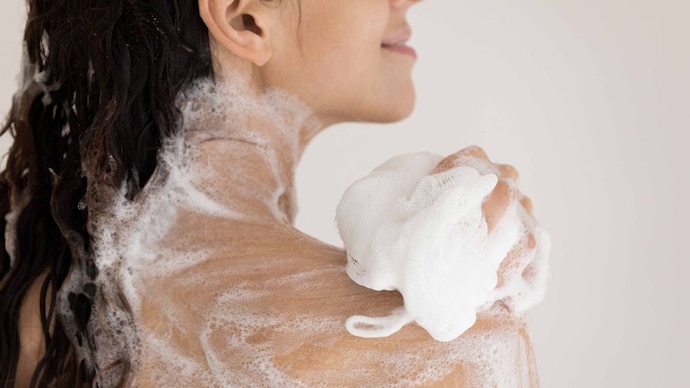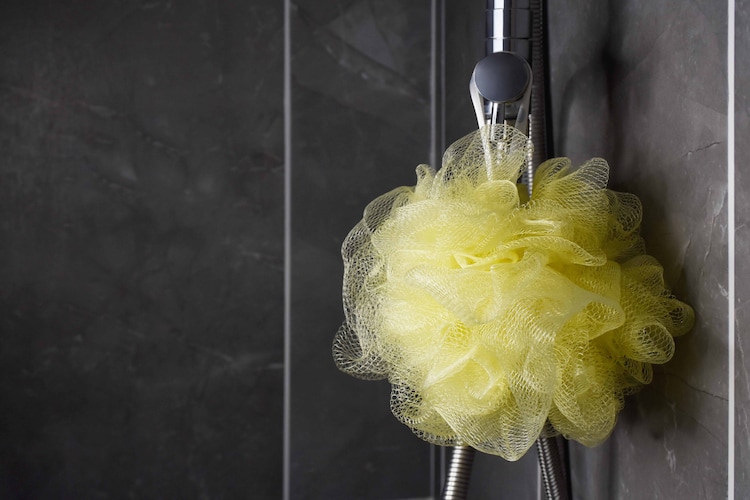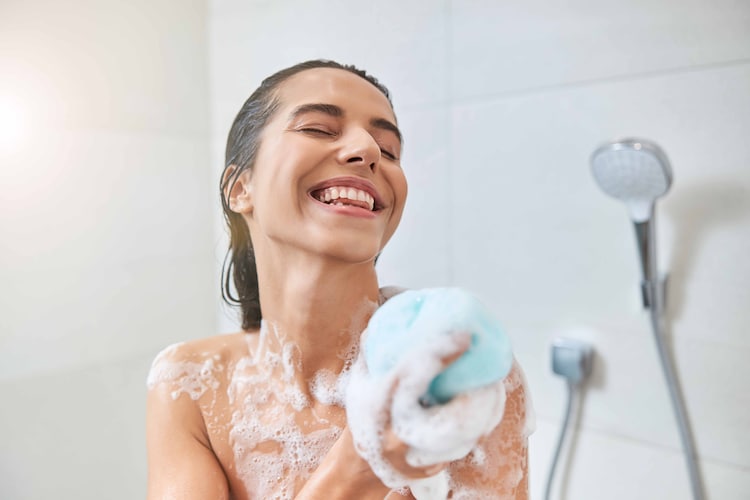Your loofah is a hotspot for germs, but don’t just throw it away
Using a loofah in the shower may be soothing, but it’s time to consider the germs that this bath staple may harbor while you’re in your bathroom.

in short
- Loofah removes dead skin cells, leaving skin smooth and soft.
- Its porous structure can trap bacteria, mold and mildew in humid conditions
- The germs on the loofah can cause various skin problems.
For many of us, our daily shower is more than just a cleaning ritual – it’s a calming form of self-care that helps us relax and cope with life’s challenges. Gone are the days of just rubbing with soap; We now use bath salts, scrubs, oils and more.
A staple in many people’s bathing routine is the loofah. There’s something uniquely satisfying about lathering up your favorite shower gel and turning it into a rich, scented foam. But if you’re a loofah lover, be careful, because it might contain more than just your favorite scent. It is actually a prime breeding ground for germs.
So, while that fluffy lather may feel refreshing, it may be time to rethink how you use (and care for) your loofah.
What effect does a loofah have on your skin?
“A loofah is a rough, fibrous sponge used to exfoliate and cleanse the skin, often made from natural plant fibers or synthetic materials. It effectively removes dead skin cells, leaving the skin Helps in smoothening and softening,” explains Dr. Mohana Chauhan, consultant dermatologist at Prakash Hospital, NCR. India Today,
However, according to Dr Ruby Sachdev, consultant – aesthetic physician at Gleneagles Hospital, Bengaluru, this is not ideal for everyone and is not the best option for regular exfoliation.
The rough texture of a loofah may irritate skin health rather than support it, especially for those with sensitive or compromised skin barriers. For most skin types, using a loofah two to three times a week provides enough exfoliation without going overboard.

hazard warning!
“Loofahs can harbor bacteria, mold, and mildew due to their porous structure, especially in humid, moist environments such as bathrooms. After scrubbing, loofahs trap dead skin cells and oils, allowing a thorough clean and When dry, they provide a breeding ground for bacteria,” explains Dr Mickey Singh, Director, Bodycraft Clinic and Salon, Bengaluru.
Dr. Singh says that in warm, moist conditions, bacteria can grow rapidly, creating a risk of skin infection, especially if the loofah is used on broken or irritated skin.
To this, Dr. Chauhan says that the texture of the loofah creates an ideal environment for bacteria like Pseudomonas, E. coli and Staphylococcus to grow, and this can be easily transferred to the skin.
Shower gels and soaps can also leave residue in the loofah fibers, which further promote bacterial growth. And, since people do not clean and dry the loofah frequently after use, this increases the risk.
Experts further mention that the germs on the loofah can lead to various skin problems, including rashes, excessive dryness, acne flare-ups, and infections like boils and folliculitis. They can also worsen skin conditions such as eczema and cause friction keratosis (thickening of the skin) or, in rare cases, cutaneous amyloidosis, a condition that results from repeated trauma.
Meanwhile, for people with cuts and scrapes, using a contaminated loofah increases the risk of infection because bacteria can enter through the broken skin.

before you loofah
Dr. Sachdev suggests that if you choose to use a loofah, change it every 2-4 weeks to reduce the risk of bacteria accumulation. In particular, natural loofahs require more frequent replacement due to their porous texture. Synthetic loofahs are slightly more resistant to bacteria but should still be changed regularly to ensure optimal skin health.
“Cleaning the loofah regularly by soaking it in diluted bleach or microwaving it for 20 seconds in synthetic bleach can help reduce bacteria build-up,” says Dr. Singh.
Here are some tips to follow:
- Wash and dry the loofah thoroughly after each use, storing it in a cool, dry place to reduce bacteria growth.
- Disinfect the loofah weekly by soaking it in a mild bleach solution or antibacterial wash.
- Avoid using a loofah on delicate skin or open wounds, as this may cause irritation or increased infection.
- Limit use to 2-3 times per week to avoid excessive exfoliating.
- Always moisturize after using a loofah to retain moisture in the skin.
Know your options
For safer exfoliation options, consider soft washcloths that are easy to clean and replace frequently, or silicone scrubbers that prevent bacteria build-up and are easy to clean. You can also try mild chemical exfoliants, like AHAs or BHAs, which provide controlled exfoliation.
Exfoliating gloves can be a good option, as they allow controlled exfoliation and can be washed after each use. Alternatively, try body brushes with synthetic bristles, which are easier to keep clean and dry faster, reducing the risk of bacteria.
Using safe, non-abrasive tools can protect your skin while providing effective cleaning.





